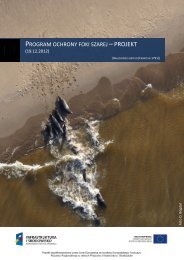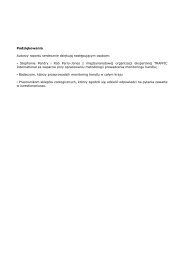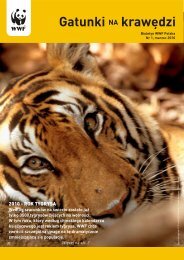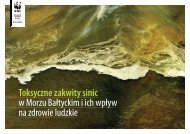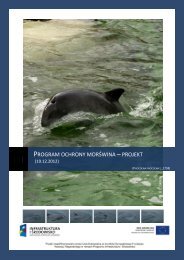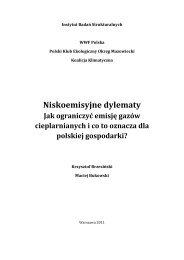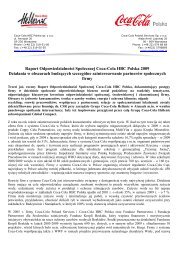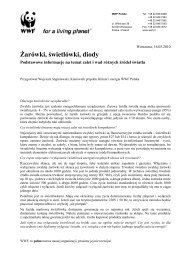COLLECTING GHOST NETS IN THE BALTIC SEA - WWF
COLLECTING GHOST NETS IN THE BALTIC SEA - WWF
COLLECTING GHOST NETS IN THE BALTIC SEA - WWF
You also want an ePaper? Increase the reach of your titles
YUMPU automatically turns print PDFs into web optimized ePapers that Google loves.
3.2. Removal of nets entangled<br />
in shipwrecks by divers using the<br />
ROV robot – Polish and Lithuanian<br />
experience<br />
The principal application of a ROV (remotely operated<br />
vehicle) is during the operations on shipwrecks,<br />
where it proves to be very useful. It makes it possible<br />
to carry out an initial inventory of shipwrecks<br />
with respect to the amount of nets entangled on<br />
them, to plan future operations efficiently and to<br />
facilitate divers’ work and increase their personal<br />
safety by providing updated information on the<br />
situation on the wreck before divers go underwater.<br />
However, the situation is different in the case of<br />
searching for and removing nets lying on the sea<br />
bottom, where, according to the Lithuanian partners,<br />
a side-scan sonar proves to be more effective,<br />
especially where a large area has to be<br />
scanned. The effects of the divers’ operation are<br />
described in Table 4.<br />
3.3. The relationship between the<br />
operation conditions and intensity<br />
and the amount of nets recovered<br />
in the individual areas<br />
© <strong>WWF</strong> / M. Szulc<br />
Information on the net removal output of the individual<br />
vessels is presented in Table 5.<br />
The data on the net removal output confirms earlier<br />
analyses. The differences between the results<br />
of the vessels from Kołobrzeg and vessel WŁA-11<br />
may be accidental. However, a certain effect of the<br />
type of fishery and technical characteristics of vessels<br />
can be observed. WŁA-11 was the largest<br />
(large weight – great inertia) and most powerful<br />
vessel used and consequently it showed the greatest<br />
tendency to tear the nets off the “searching<br />
hooks”. Considering the relatively small amount of<br />
data collected, isolated events have to be taken into<br />
account when evaluating the results; one example<br />
is the result produced by vessel KOŁ-40, which had<br />
retrieved an entire pelagic pair trawl.<br />
It should also be emphasised that, due to adverse<br />
weather conditions, the Lithuanian vessel spent<br />
only 6 days at sea although it had been chartered<br />
for 20 days. The remaining days will be used<br />
in March 2013, but the results will not be included<br />
in this report.<br />
© <strong>WWF</strong> / M. Szulc<br />
18 <strong>COLLECT<strong>IN</strong>G</strong> <strong>GHOST</strong> <strong>NETS</strong> <strong>IN</strong> <strong>THE</strong> <strong>BALTIC</strong> <strong>SEA</strong>



